Lifetime of the EML 45 tube
This set up runs 6 hours per day, every day, since 2008.
 This is an article is not final until both tubes have stopped working. This is a pair of EML 45, with an hour counter attached to the amplifier. The owner made a very nice wooden box for the counter. This documents a lifetime of our 45 tubes, above 40.000 hours. The amplifier was made by a Japanese manufacturer. The tubes show no significant loss of emission, on a Model 1575 tube tester, which is a licenced Hickok 539C, their top model. Specially because it is so difficult to predict tube lifetime, we are happy to present a case here, which was documented since 2008.
This is an article is not final until both tubes have stopped working. This is a pair of EML 45, with an hour counter attached to the amplifier. The owner made a very nice wooden box for the counter. This documents a lifetime of our 45 tubes, above 40.000 hours. The amplifier was made by a Japanese manufacturer. The tubes show no significant loss of emission, on a Model 1575 tube tester, which is a licenced Hickok 539C, their top model. Specially because it is so difficult to predict tube lifetime, we are happy to present a case here, which was documented since 2008.

UNFINISHED ARTICLE.....
So this article is not yet finished, as one of the tubes of this pair is still living, and so is their first owner. The person who build this pair of tubes, died of old age in 2021. We hope to continue to collect more information from the tubes owner, as more years pass by. I try to avoid engineering language as much as possible, so things like "MTBF" and other technical terms are missing here. Still a lot can be said about tube lifetime, and yet not handle all details. At EML we get often asked: What is the lifetime of your tubes? Let me tell you this, if someone gives you a straight number, he is just telling what you want to hear. We we can never give a precise number. That is because it comes down to a long chain of factors, and when one those factors is weak, the chain breaks at this specific point, and the life of one tube of a pair, will come to an end. So we can only guarantee a minimum lifetime, but in many real life situations we see a 10x higher lifetime, sometimes less, and sometimes more.
The life time determining factors are:
- Tube raw materials, preparation and storage of the half finished materials, the building process. It all begins here, and it results in just raw tested, hopefully fine tubes. If good working, the tubes are vacuum sealed, gettered, and socketed.
- Burn in. This does not create 'better' tubes, but it gives insight in the quality. If burn is works smooth, that's always a good sign.
- Testing, step1). Testing at maximum condition. Looking for issues.
- Pre-Storage. During this period, there should be no spontaneous glass cracks. This is an early failure mechanism.
- Testing, step2). Parametric testing and matching.
- Shipment. This process is not very good for the tubes. This is mechanical stress on the heaters and the glass stem, (the part inside the socket), and deformed or broken off parts may result from box dropping.
- Customer burn in. Meaning when the tubes are new, keep an eye on them, and minimize the number of switch on and off. Ideal is use periods of 1...4 hours at a time, and then let them cool off, for the next day. After burn in, they become more resistant.
- Correct heater voltage. No experiments with funny electronics. With auto bias, failures or mistakes are avoided in a natural way. DC coupling is a known trouble factor. Use no paper in oil capacitors, no current source for the heaters, and what other things are not beneficial for lifetime. Just an auto bias circuit, the classical way, has the better chances for long tube life.
- Recommended working points for long life, are given for that purpose. For instance 300B has a long life working point of not more than 80% of maximum dissipation. However 2A3 and 45 can be used at maximum conditions. So this point here will apply almost all tubes, just as exception not for the 45, and also not for the 2A3.
- Length of the hearing sessions. Fewer but longer use periods, will lead to much better life time than many short periods. It's really a good idea to use an hour counter :) They cost not much, and tubes have often more use as thought.
As you can see from the above, very long tube life of more than just 'luck'
What are the failure mechanisms?
These are basically:
- Catastrophic failures (like vacuum leakage, heater breakage)
- Spurious failures (like sometimes a crack noise)
- Slow loss of good electrical data.
Moreover, general failure theory applies to electron tubes perfectly well: In fact it was the era of electron tubes, where the military handbooks defined the systems and test methods. WIth no adaptations this was later used for semiconductors as well.
Why we can not specify the lifetime
This is not a very popular answer but it is so. Let's just take a round number: 10.000 hours. Then, users would like to hear: 'Lifetime is 10.000 hours, and all tubes will reach that'.
However lifetime is always a statistical average. So lifetime can be less, but also be more. This is why we can not say: Lifetime=10.000 hours.
Now, this is not a recent issue. Lifetime and reliability of electron tubes never made the military very happy. They have come up with things like the MTBF (Mean Time Between Failure), and the JAN (Joint-Army-Navy) testing method which improves reliability. Both MTBF and the JAN spec are still in use today for semiconductors, though electron tubes made it necessary to develop such standards.
Please keep apart lifetime and failure rate.
The question must always be: What is the probability you reach a certain lifetime? A product may (sometimes) fail before expected life time is reached. Same as with humans. So expected lifetime of a new born baby would for instance be 73 years. However 30% of them will not reach this age. Yet, expected lifetime is 73 years still. That is so, because 2/3 still live, and some become 80, some 90 or 100 years old. That makes the average 73 years. So always, when you specify a lifetime expectation, you have to add the probability this number will be reached. Doing so, you can not try to come close to 100%. So when you want to specify a lifetime expectation for humans, which is close to 100%, you would find the number of 18 years. (This is really so). The above example shows how difficult interpretation of numbers can be.
When talking about electronic components, we must distinct between such which end the lifetime of the equipment, and such that can be replaced. A part which is not replaced is for instance the magnetron tube of a house hold oven. These must have a specified lifetime that will be short, perhaps these run only 20 minutes per day. Yet that must be reached with say 96% probability during the guarantee period. This is just a calculation, when they know 4% will fail, they just make the ovens 4% more expensive and replace then defective ovens for free.
For products which like to fail, but can be replaced, the situation is totally another. Here, we do not need to specify this with 96% chance, because this would make specified lifetime unrealistically short. Let's take a light bulb for that. With 96% chance you can expect only 300 hours, that is because of 4% early failures. However when you replace those, you will find 70% of the bulbs can be used for two years (which equals perhaps 5000 hours). A possible specification would be: 5000 hours with a probability of 70%.
Some real numbers for tubes.
When we say the lifetime expectation for a tube like ECC82 is 5000 hours, which is a realistic number for an NOS quality product, nobody is angry when they last 7000 hours. The same way, you can not complain if they last only 3000 hours. The average of 7000 and 3000 is 5000 hours. To prevent free replacement of products, the manufacturer would say the lifetime is 5000 hours, but they guarantee only half of it. Like with a car engine, we all know it can last for 10 or 20 years, but guarantee ends much before that.
With tubes, it's better than above, because we can measure their remaining quality with a tube tester. Actually the Hickok testers are probably the best there is, for this purpose. It's giving generically imprecise test data, but the remarkable thing about Hickok testers is, when they say a tube is 'good' or 'bad' that's what they always are.
What else can we say about lifetime?
Yet it should not be under estimated, if tubes appear to be 100% ok, much after the expected lifetime, they may die still unexpected of heater breakage. All other failure mechanisms will (likely) not take place any more after 40.000 hours, because these are catastrophic failures, like glass crack or leaky pins. So chances on that gets lower, the older the tube gets. The only catastrophic failure with increasing risk is heater breakage, and this is exactly the reason why correct heater voltage, is so important of long tube life.
So, when tubes appear fully ok, and test strong after 40.000 hours, the only thing likely to happen is a heater breakage, and as long as that does not happen, there are a lot more hours possible.
UNFINISHED ARTICLE.....
will be continued
An carefully reported case
Finding out lifetime of a tube, means MANY years of testing, and normally this is not done. Instead of that, an prediction can be made, using long term statistics. For this we collect series numbers at EML, of all tubes ever made, related to date of sales, and customer feedback if we get any. The following is such a case of customer feedback.
We did not know, but a USA customer was actually doing an interesting test for us. He started this initially just for his own interest. This user by profession is specialised on human health. So naturally, he was interested to find out how and when new made tubes age. For this, he equipped his amplifier with an hours counter, and he tested the tubes regularly. Documenting it also with pictures of the test results. His expectation was to see some steady decay, until after some thousands of hours, he would have to order new tubes. Much to his surprise, it went not like that, and he contacted his sales person, our USA distributer to ask if perhaps he would still need new tubes, because the tubes had already been used for years running continuously. The answer was, there is no reason to exchange good testing tubes. So he continued.
First time EML was involved, was when his pair of 45 tubes was still testing fully like new, after 7 years of daily use, and we agreed to keep in touch. Another three years later, so at that time after 10 years of daily use, we asked him again, and now the tubes showed now 2% loss. Which is like new still. Though they run at that moment 39000 hours. The expectation was at that moment, parameters itself stay that good for a longer time, until at some point, the filaments will break.
Here you can see some of his test results.
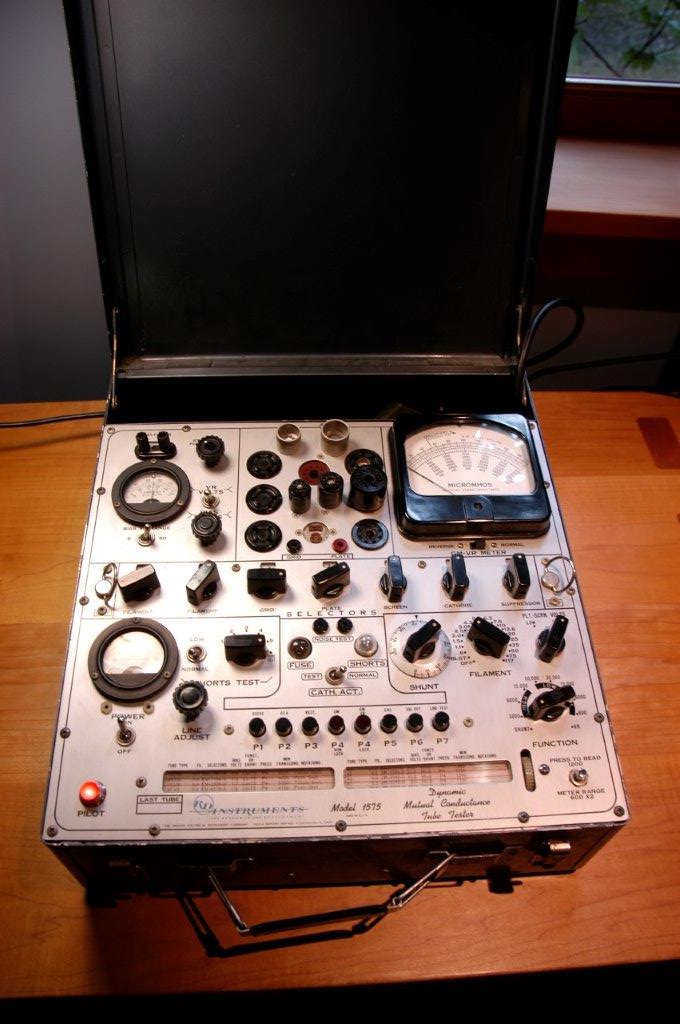 Picture 1. Tube tester: This is a 1575, which Hickok supplied to companies like RD Instruments and Western Electric. The 1575 is based on the famous 539C tester, and some say the internals of the 1575 are even better.
Picture 1. Tube tester: This is a 1575, which Hickok supplied to companies like RD Instruments and Western Electric. The 1575 is based on the famous 539C tester, and some say the internals of the 1575 are even better.
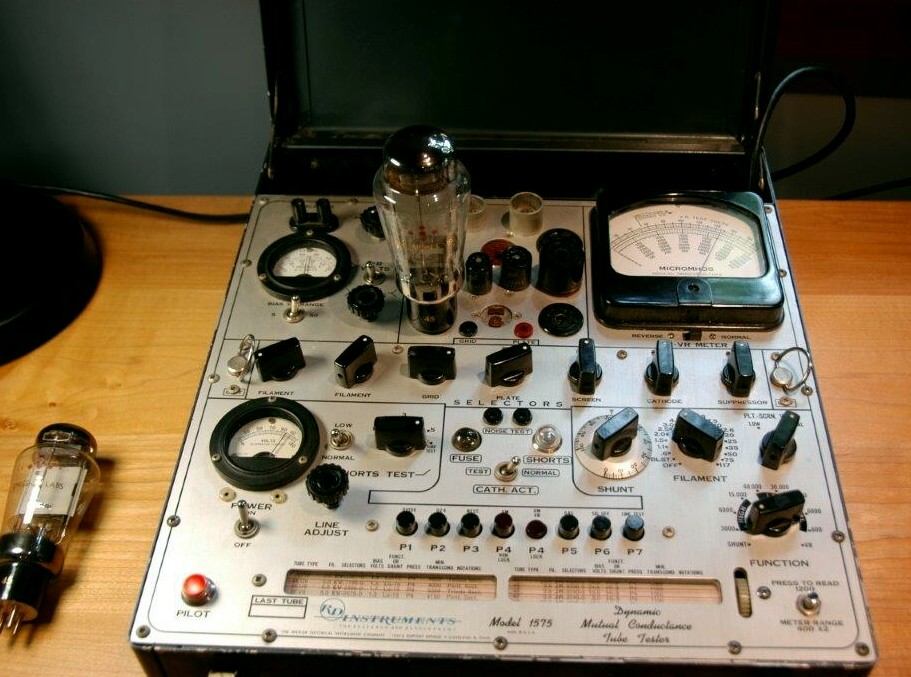 Picture 2. Measurement of tube 1 Series Nr. 514M. Gm=2200 Micromhos. (min 1100)
Picture 2. Measurement of tube 1 Series Nr. 514M. Gm=2200 Micromhos. (min 1100)
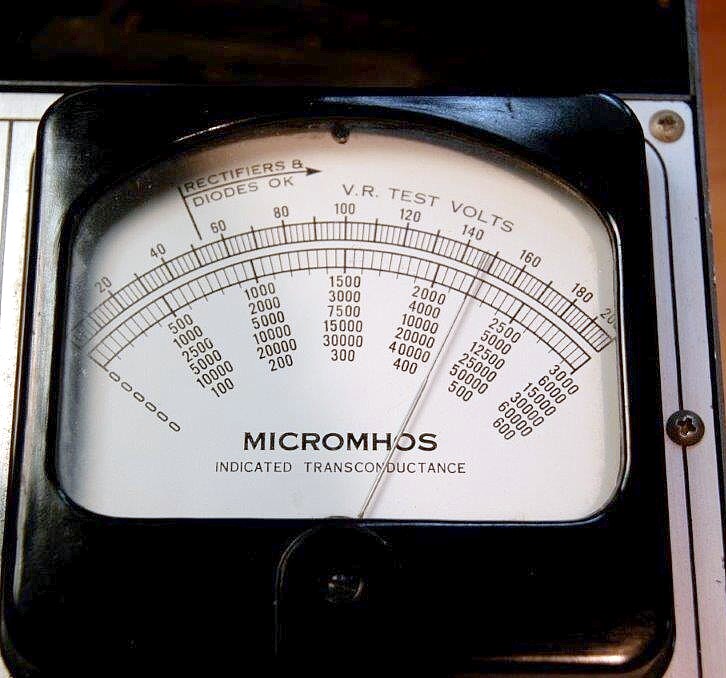 Picture 3. Tube 1 series Nr. 514M on tube tester
Picture 3. Tube 1 series Nr. 514M on tube tester
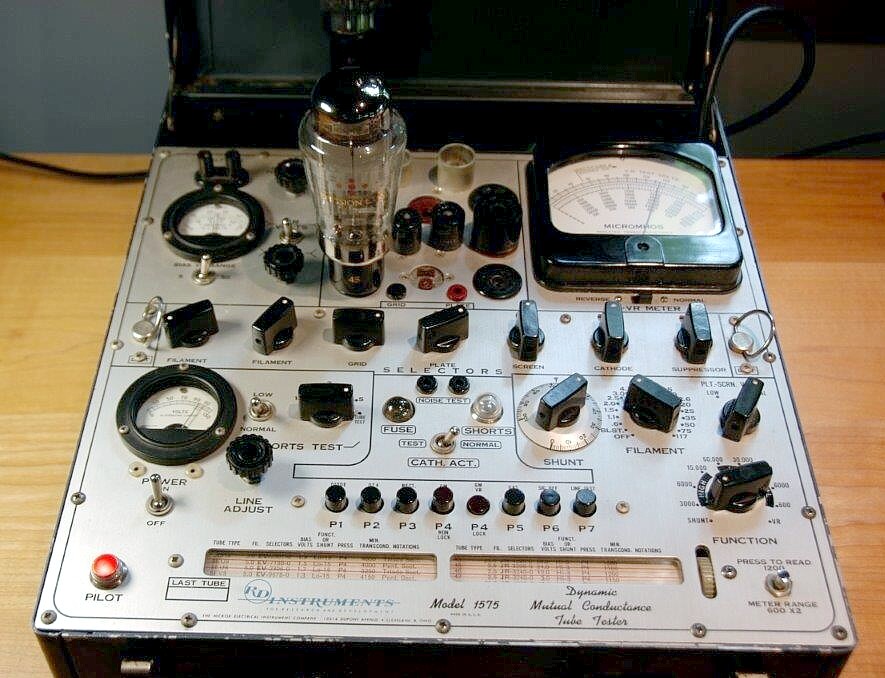 Picture 4. Tube 2 series Nr. 512M on tube tester
Picture 4. Tube 2 series Nr. 512M on tube tester
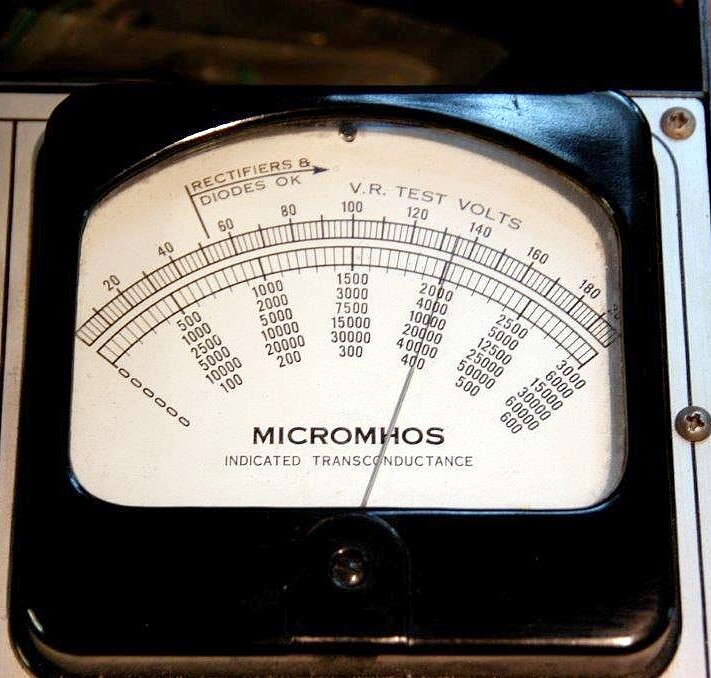 Picture 5. Tube 2 Series Nr. 512M. Gm=2000 Micromhos (min 1100)
Picture 5. Tube 2 Series Nr. 512M. Gm=2000 Micromhos (min 1100)
 Picture 6. Kurashima 45 with EMT 986 CD player and elapsed time meter
Picture 6. Kurashima 45 with EMT 986 CD player and elapsed time meter
 Picture 7. Close up of elapsed time meter 20,440.5 hours since reset in 2013.
Picture 7. Close up of elapsed time meter 20,440.5 hours since reset in 2013.
Some of the email communication:
Monday, March 27, 2023 10:19 AM
Dear Jac,
Sorry for the delay getting back to you, I was out of the lab for several days and wanted to listen carefully to the repaired tube before I got back to you. The most interesting note is that both tubes, the repaired one (514 M SMPE) and the other one of the pair (512 M), that now has a total of 49,653 hours on it, sound great with no noticeable difference. These are truly remarkable tubes; I have no idea how long the 512 M will last but I will be sure to let you know. I did not expect a power tube to last as much as 10,000 hr.
Thanks for taking the time to have the tube overhauled, and of course please let the son of the factory founder, who made the repairs, know how much I appreciate his efforts. Adding the extra flag SMPE was truly a kind gesture. Although I have several vintage tube stereo systems, I listen to the Kurashima 45 amp with the EML tubes the most. I prefer this amplifier to all the others.
Thanks again Jac for producing such robust and excellent sounding audio tubes.
Cheers,
Peter
THIS EXPERIMENT MAY NOT HAVE COME FULLY TO AN END. ONE TUBE (S/N 514M) HAS DIED in 2022, AFTER 42691 HOURS, COLLECTED OVER 20 YEARS OF OPERATION WITH AN AVARAGE OF almost 6 hours per day. THE OTHER TUBE (S/N512M) IS STILL RUNNING AND IT IS NOW AT 48931 HOURS.
As a courtesy, we offered to re build the defective tube for him. So we received back this tube with 42691 hours on it, and we repaired it for free. We added a small metal flag inside with his initials. The other tube with 48931 hours on it, is still running. .
Thursday, November 17th, 2022 00:55
Hi George,
Sorry for the delay getting back to you. This is the busiest time of the year for us with post-harvest virus testing keeping us working lots of hours. I took a look at the elapsed time meter hooked to the Kurashima 45. Of the two 45 power tubes; one stopped working at 42, 691 hrs (ser# 514 M) and the other is still working well with 48,931 hrs (ser# 512 M). The first 45 tube to fail was working fine, then one day when the amp was turned on there was no signal in one of the channels. There was no popping or unusual sounds before it failed. The other tube still sounds great and is still in service. It will be interesting to see how long this Emission Labs 45 tube will last. Over the years I have found I enjoy listening to the Kurashima 45 amp the best out of my small collection of McIntosh and Marantz vintage equipment. If I am away from the lab for a few days, I always turn on the Kurashima 45 first when I get back.
Hope you and your family have been able to stay safe and healthy in these strange times. We work mainly with plant viruses where insects are the vectors; with SARS we are the vectors… makes you think.
All the best,
Peter
Total hours on the tubes are as of today 39,603. (13.09.2018)
I listen mostly to FM on the McIntosh and Marantz 10b tuners but it
was easier to move the EMT 986 CD player to a spot with better light
so I could take pictures. Let me know if the pictures are ok or if you need more.
This amplifier is now on between 10-11 hours a day, sometimes more on weekends. I am amazed at how durable these tubes are.
Hope this helps,
Peter
Mo 11.09.2018 18:23
Hi George,
The tubes (EML 45) test almost the same as they did on:
Sept. 3rd 2013 at tube (1) 2225 min 1100 and tube (2) 2025 Mar. 15th 2017
tube (1) 2150 min 1100 and tube (2) 2000 Sept. 9th 2018
tube (1) 2150 min 1100 and tube (2) 2000
Not sure why these tube are so durable; they have been in constant use since purchased the Kurashima 45 back in Feb. 2008. This amp is on every day except when I'm on holidays.
Forgot to mention the tester: RD Instruments.
For Research and Development. Same as WE KS-15750-L2 Hickok Electrical Instrument Co.
Hope this helps,
Peter
Mo 10.09.2018 14:12
Hi George,
I am still using the same 45 Solid Plates and I changed to using the western electric 717a's after I spoke with you some time ago. The 45's have 39,569 hours on them now and they still sound great. I will test them tonight and let you know the results tomorrow. This 45 amp is great; I listen to it more than all of my other equipment. I have added an EMT 986 CD player so I can listen to my old CD collection but I mostly listen to FM through my McIntosh tuners and Marantz 10b. Hope all is well with you and you had some time to surf this summer.
Cheers,
Peter
Sent from my iPhone
Begin forwarded message:
From: 'Peter Ellis' <ellisp@xxx.ca>
Date: April 16, 2015 at 3:44:53 PM EDT
To: 'George Lenz' <glenz10183@xxx.com>
Subject: FW: Audio pictures
Hi George,
Here are a few pictures of the 45 amp and the elapsed time meter. The elapsed time meter was zeroed 22 months ago; I was originally planning to zero it every year but forgot June of 2013. It averages between 3400 and 3500 hours per year and the variance is due only to the number of days I am away from the house. This amp it turned on every day with a time clock switch so it wakes me up every morning and it is on for approximately 9.6 hours every day that I am here (almost always). I received the amp back in March of 2008 to the best of my memory and it has played every day since except for the rare holiday I take away from the house/ laboratory. I had difficulty with light so I had to move the amp to where I could get some pictures. I am going to leave the WE 717a tubes in because I prefer them to the original red 5693's. Both the 5693's and the EML 45 Solid Plates were in the amp since new. I tested both the EML 45's and the 5693's this week with my tester. I use a Hickok model RD Instruments 1575 for Research and Development - it appears identical to the Hickok Western Electric version KS-15750-L2 and uses the same roll chart to test all the Western Electric tubes.
It is stunning to me that the EML 45's still test nearly the same as when I received them 7 years ago and with somewhere between 23,000 to 24,000 hours on them. The results are as follows:
1. EML 45 2200 /min 1100 100% = 1692
2. EML 45 2025/ min 1100 100% = 1692
These tubes test better than my two NOS EML 45 Globe tubes that test at 1925 and 1800. I use these sparingly because they are rare. I tested the 45 Solid Plates back in Sept of 2013 and they tested the same as they did this week. I am amazed at how durable these tubes are.
After seven years the RCA 5693's tested as follows:
1. RCA 5693 1400 / min 1075 100% = 1649
2. RCA 5693 1250 / min 1075 100% = 1649
When these tubes were new they tested around 2000. Although they are considered 10,000 hr tubes they have also held up well considering they have in excess of 23,000 hr on them. The RCA 5Z3 rectifier also tests great so this Kurashima 45 amp is very easy on the tubes.
Sorry if the pictures are not great; our house is quite dark with the surrounding large trees. Let me know if you want me to try to take some better pictures.
Cheers,
Peter